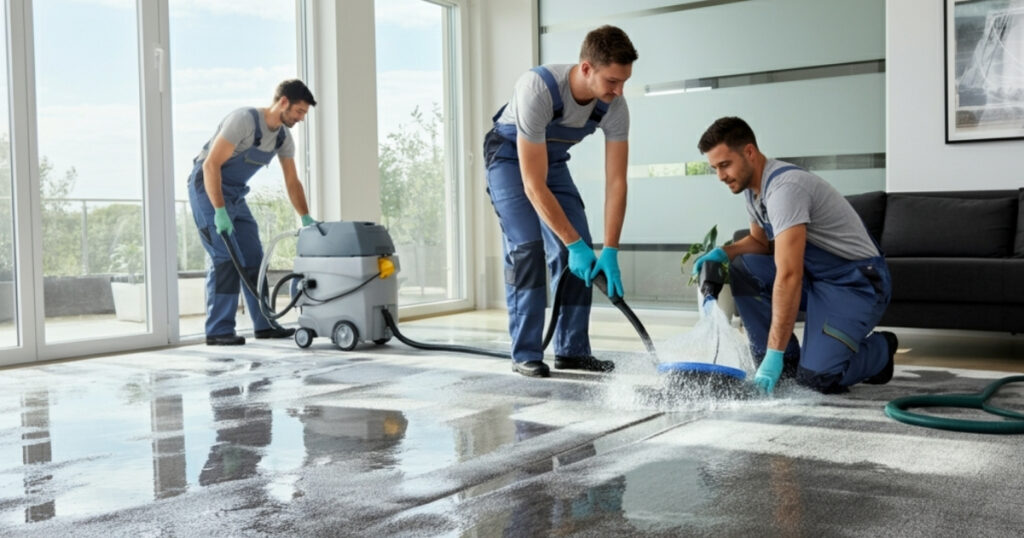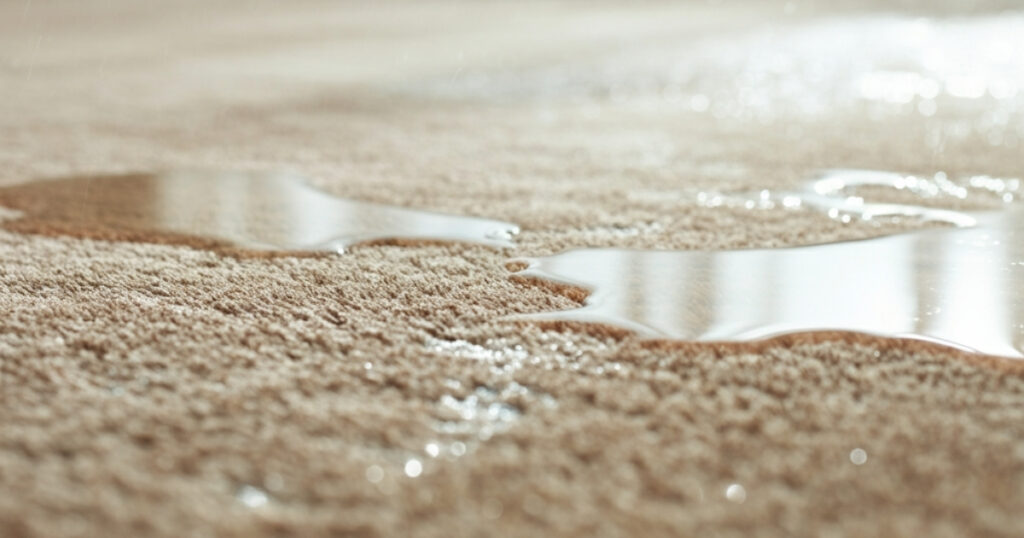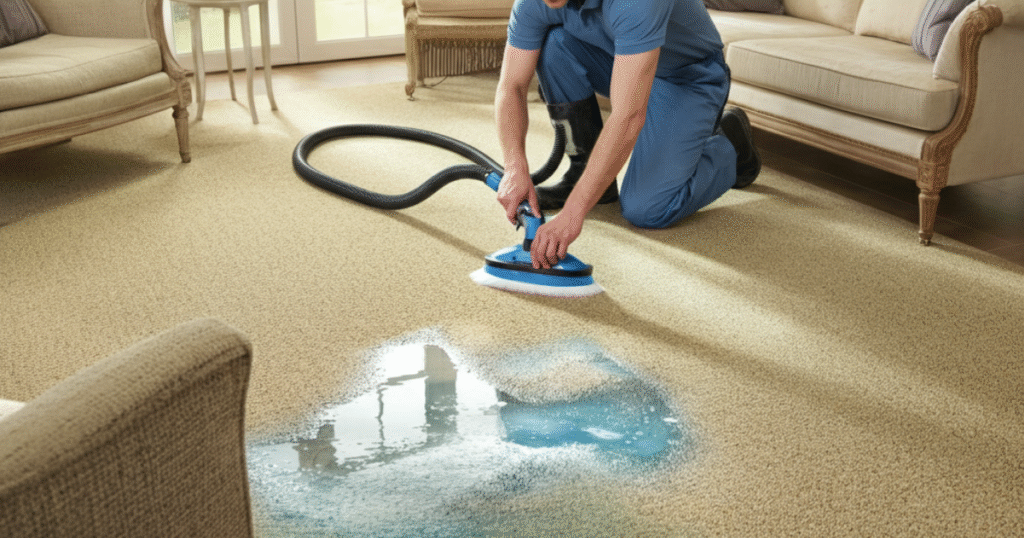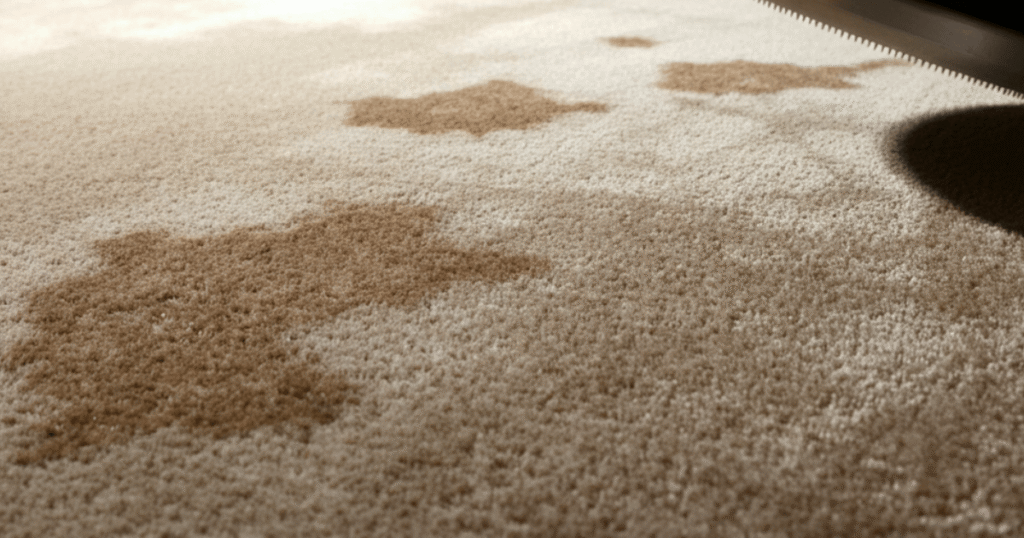Outdoor resin furniture offers durability and style for your patio or deck. However, regular cleaning keeps these pieces looking their best throughout the seasons. Learning how to clean outdoor resin furniture properly extends its lifespan while maintaining its attractive appearance.
Resin furniture attracts dirt, pollen, and outdoor grime over time. Therefore, establishing a proper cleaning routine prevents permanent staining and material degradation. This comprehensive guide covers everything you need to restore your resin furniture to its original condition.
What Makes Resin Furniture Different
Resin furniture consists of synthetic materials designed to withstand outdoor conditions. Unlike wood or metal, resin resists moisture, insects, and temperature fluctuations effectively. Additionally, this material doesn’t require special treatments or seasonal maintenance like traditional outdoor furniture options.
The non-porous surface of resin furniture prevents deep staining in most cases. However, surface dirt and environmental contaminants can build up over time. Moreover, UV exposure may cause some color fading if proper care isn’t maintained regularly.
Understanding resin’s characteristics helps you choose appropriate cleaning methods. Furthermore, this knowledge prevents damage from harsh chemicals or abrasive techniques. Consequently, proper cleaning approaches preserve your furniture’s appearance and structural integrity for years.
Benefits of Proper Resin Furniture Maintenance
Regular cleaning prevents permanent discoloration and material breakdown over time. Clean furniture also provides healthier outdoor living spaces for your family. Additionally, well-maintained resin pieces retain their value and aesthetic appeal longer than neglected furniture.
Proper maintenance reduces replacement costs significantly over the furniture’s lifetime. Moreover, clean outdoor furniture creates more inviting spaces for entertaining guests and family gatherings. Therefore, investing time in regular cleaning pays dividends in both appearance and functionality.
Essential Cleaning Supplies for Resin Furniture
Basic Cleaning Materials
Gather mild dish soap, warm water, and soft-bristled brushes before starting your cleaning project. Additionally, collect clean microfiber cloths, a garden hose, and a large bucket for mixing cleaning solutions. These basic supplies handle most routine cleaning tasks effectively.
Avoid abrasive scrubbers or steel wool that can scratch resin surfaces permanently. Furthermore, skip harsh chemicals like bleach or acetone that may damage the material’s finish. Therefore, stick with gentle cleaning products designed for synthetic materials and outdoor furniture specifically.
Consider investing in a pressure washer for heavily soiled furniture pieces. However, use low pressure settings to prevent damage to the resin material. Moreover, maintain proper distance when using pressure washers to avoid concentrated water damage.
Specialized Cleaning Products
Commercial outdoor furniture cleaners offer enhanced cleaning power for stubborn stains and buildup. These products are formulated specifically for synthetic materials like resin. Additionally, specialized cleaners often include protective agents that help prevent future staining and discoloration.
Oxygen-based cleaners provide effective alternatives to harsh chemical products while remaining environmentally friendly. Furthermore, these cleaners break down organic stains like mold, mildew, and algae naturally. Consequently, oxygen cleaners offer safe yet powerful cleaning solutions for outdoor resin furniture.
White vinegar mixed with water creates an excellent natural cleaning solution for regular maintenance. Similarly, baking soda paste helps tackle tough stains without damaging resin surfaces. Therefore, these household items provide cost-effective cleaning alternatives when commercial products aren’t available.
Step-by-Step Cleaning Process
Initial Preparation Steps
Remove all cushions, covers, and accessories from your resin furniture before beginning the cleaning process. Additionally, clear the surrounding area of plants, decorations, and other items that might interfere with cleaning. This preparation ensures thorough access to all furniture surfaces and prevents accidental damage to nearby items.
Choose a shaded area for cleaning to prevent cleaning solutions from drying too quickly on surfaces. Moreover, avoid cleaning during the hottest part of the day when solutions evaporate rapidly. Furthermore, ensure adequate ventilation if using commercial cleaning products with strong odors or fumes.
Inspect furniture pieces for cracks, loose joints, or other damage before cleaning begins. Additionally, address any structural issues before proceeding with the cleaning process. Consequently, this inspection prevents water damage or cleaning solution penetration into damaged areas.
Removing Loose Debris and Dirt
Start by removing loose dirt, leaves, and debris using a soft brush or cloth. Additionally, rinse furniture with clean water to remove surface dust and pollen buildup. This initial cleaning step prevents grinding dirt into the resin surface during scrubbing.
Pay special attention to crevices, joints, and textured areas where debris accumulates most readily. Moreover, use compressed air or a soft brush to dislodge stubborn particles from hard-to-reach spots. Therefore, thorough debris removal ensures more effective cleaning results in subsequent steps.
Sweep or vacuum the surrounding area to prevent recontamination during the cleaning process. Furthermore, position tarps or drop cloths to protect nearby surfaces from cleaning runoff. Consequently, this preparation maintains a clean workspace throughout the entire cleaning procedure.
Deep Cleaning Techniques
Mix warm water with mild dish soap in a large bucket, creating a gentle cleaning solution. Additionally, use approximately one tablespoon of soap per gallon of water for optimal cleaning power. This ratio provides effective cleaning without leaving residue on resin surfaces.
Apply the cleaning solution using a soft cloth or sponge, working from top to bottom on each furniture piece. Moreover, use circular motions to work the solution into textured surfaces and stubborn stains. Furthermore, allow the cleaning solution to sit for several minutes on heavily soiled areas before scrubbing.
Scrub gently with a soft-bristled brush to remove embedded dirt and stains without scratching the resin surface. Additionally, focus extra attention on high-touch areas like armrests and seat surfaces where oils and dirt accumulate. Consequently, this targeted approach ensures thorough cleaning of the most problematic areas.
Tackling Stubborn Stains
Create a paste using baking soda and water for tough stains that resist regular cleaning methods. Additionally, apply this paste to stained areas and let it sit for 15-20 minutes before scrubbing gently. This natural abrasive helps lift stains without damaging the resin material.
For mold or mildew stains, mix equal parts white vinegar and water in a spray bottle. Moreover, spray the affected areas and allow the solution to work for 10-15 minutes before scrubbing. Furthermore, vinegar’s acidity naturally breaks down organic stains while disinfecting surfaces simultaneously.
Commercial stain removers designed for outdoor furniture provide additional options for persistent discoloration. However, test these products on inconspicuous areas first to ensure compatibility with your specific resin material. Therefore, this precaution prevents accidental damage to visible furniture surfaces.
Specialized Cleaning Methods
Addressing Mold and Mildew
Mold and mildew thrive in humid conditions and can quickly spread across resin furniture surfaces. Additionally, these organisms create unsightly stains and potential health hazards if left untreated. Therefore, prompt action prevents extensive contamination and makes removal easier.
Mix one part white vinegar with three parts water to create an effective anti-fungal cleaning solution. Moreover, add a few drops of tea tree oil for enhanced antimicrobial properties and pleasant scent. Furthermore, this natural solution kills mold spores while preventing future growth on treated surfaces.
Apply the vinegar solution generously to affected areas and allow it to penetrate for at least 20 minutes. Additionally, scrub gently with a soft brush to physically remove mold and mildew growth from surface textures. Consequently, this combination of chemical and mechanical action provides comprehensive mold removal results.
Removing Algae and Green Stains
Algae growth creates green, slimy stains that make furniture surfaces slippery and unsightly. Additionally, these organisms thrive in moist, shaded conditions common around outdoor furniture areas. Therefore, regular cleaning prevents algae establishment and makes removal more manageable.
Create a stronger cleaning solution using oxygen bleach powder mixed according to manufacturer instructions for algae removal. Moreover, oxygen bleach breaks down organic matter safely without producing harmful chlorine fumes. Furthermore, this environmentally friendly alternative provides effective cleaning power for stubborn algae stains.
Apply the oxygen bleach solution to affected areas and allow extended contact time for maximum effectiveness. Additionally, use a soft brush to agitate the solution and physically remove algae from textured surfaces. Consequently, this thorough approach eliminates both visible stains and underlying algae growth.
Dealing with Rust Stains
Rust stains typically result from metal hardware or nearby metal objects that leave orange or brown discoloration on resin surfaces. Additionally, these stains can become permanent if not addressed promptly with appropriate cleaning methods. Therefore, quick action prevents deep penetration into the resin material.
Mix lemon juice with salt to create a natural rust-fighting paste that safely removes metal stains from resin furniture. Moreover, the citric acid in lemon juice dissolves rust while salt provides gentle abrasive action. Furthermore, this combination offers effective stain removal without harsh chemicals.
Apply the lemon-salt paste to rust stains and allow it to work for 10-15 minutes before scrubbing gently. Additionally, rinse thoroughly with clean water to remove all residue and prevent potential surface damage. Consequently, this natural approach effectively removes rust stains while protecting the resin material.
Post-Cleaning Care and Maintenance
Proper Drying Techniques
Allow cleaned furniture to air dry completely before replacing cushions or covers to prevent trapped moisture and mold growth. Additionally, position furniture in sunny locations when possible to accelerate the drying process naturally. Therefore, thorough drying prevents moisture-related problems and maintains cleaning results longer.
Wipe down furniture surfaces with clean, dry cloths to remove excess water and prevent water spots from forming. Moreover, pay special attention to crevices and joints where water tends to collect and evaporate slowly. Furthermore, this final step ensures optimal appearance once the furniture is completely dry.
Avoid using heat sources like hair dryers or space heaters to speed drying, as these can damage resin materials. Additionally, excessive heat may cause warping or cracking in some resin formulations. Consequently, natural air drying provides the safest approach for maintaining furniture integrity.
Applying Protective Treatments
Consider applying UV protection sprays specifically designed for outdoor furniture to prevent color fading and material degradation. Additionally, these products create protective barriers against environmental contaminants and make future cleaning easier. Therefore, protective treatments extend furniture lifespan and maintain appearance longer.
Automotive wax provides another option for protecting resin furniture surfaces from UV damage and environmental exposure. Moreover, wax creates water-repelling surfaces that shed dirt and moisture more effectively. Furthermore, waxed surfaces typically require less frequent deep cleaning maintenance.
Reapply protective treatments according to manufacturer recommendations or seasonally for optimal protection levels. Additionally, inspect treatment effectiveness regularly and reapply when surfaces no longer shed water effectively. Consequently, consistent protection maintains furniture quality and reduces long-term maintenance requirements.
Seasonal Cleaning Schedule
Spring Cleaning Routine
Begin each outdoor season with thorough deep cleaning to remove winter accumulation of dirt, debris, and environmental contaminants. Additionally, inspect furniture for winter damage that needs attention before regular use resumes. This comprehensive spring cleaning establishes a clean foundation for the upcoming outdoor season.
Focus extra attention on areas where snow, ice, or moisture accumulated during winter storage or exposure. Moreover, check for any mold or mildew growth that may have developed in covered or stored furniture pieces. Furthermore, address these issues promptly to prevent spreading to other furniture items.
Apply fresh protective treatments after spring cleaning to maximize protection throughout the active outdoor season. Additionally, replace any damaged hardware or accessories identified during the spring inspection process. Consequently, this preparation ensures optimal furniture performance and appearance all season long.
Mid-Season Maintenance
Perform light cleaning monthly during active use periods to prevent buildup of dirt, pollen, and organic materials. Additionally, spot-treat stains immediately to prevent them from setting permanently into the resin material. Therefore, regular maintenance prevents the need for intensive cleaning sessions.
Inspect furniture weekly for early signs of mold, mildew, or algae growth, especially in humid climates or shaded locations. Moreover, address these issues promptly with appropriate cleaning solutions to prevent extensive contamination. Furthermore, this proactive approach maintains furniture appearance and hygiene throughout the season.
Rotate furniture positions occasionally to ensure even UV exposure and prevent localized fading or wear patterns. Additionally, adjust furniture placement to optimize drainage and air circulation around each piece. Consequently, these simple adjustments promote even aging and reduce maintenance requirements over time.
Fall Preparation
Complete thorough cleaning before storing furniture for winter or transitioning to off-season use patterns. Additionally, ensure all moisture is eliminated to prevent mold and mildew growth during storage periods. This final cleaning protects furniture during inactive periods and prepares pieces for storage.
Apply protective treatments before winter exposure to help furniture withstand harsh weather conditions effectively. Moreover, consider using furniture covers designed for outdoor use to provide additional protection against snow, ice, and freezing temperatures. Furthermore, proper preparation prevents weather-related damage and extends furniture lifespan.
Store lightweight pieces in protected areas when possible to minimize exposure to extreme weather conditions. Additionally, secure remaining outdoor pieces against wind damage and position them to promote drainage. Consequently, thoughtful fall preparation maintains furniture quality through winter conditions.
Troubleshooting Common Problems
Persistent Odors
Outdoor furniture sometimes develops musty or unpleasant odors from mold, mildew, or environmental exposure over time. Additionally, these odors can transfer to cushions and covers, making furniture unpleasant to use. Therefore, addressing odor sources requires thorough cleaning and disinfection approaches.
Mix equal parts water and white vinegar to create an effective odor-eliminating solution that neutralizes most organic smells. Moreover, add a few drops of essential oils like tea tree or lavender for pleasant scent and additional antimicrobial properties. Furthermore, this natural approach eliminates odors without introducing harsh chemical smells.
Apply the vinegar solution thoroughly to all furniture surfaces and allow extended contact time for maximum odor elimination effectiveness. Additionally, use fans or position furniture in breezy areas to accelerate drying and odor dissipation. Consequently, this comprehensive approach removes existing odors and prevents future development.
Color Fading Issues
UV exposure gradually fades resin furniture colors, especially in bright, sunny locations without shade protection. Additionally, certain colors like blues and greens fade more rapidly than earth tones or neutral colors. Therefore, understanding fading patterns helps establish appropriate protection strategies.
Reposition furniture periodically to distribute UV exposure more evenly across all surfaces and prevent localized fading patterns. Moreover, consider adding shade structures like umbrellas or awnings to reduce direct sunlight exposure during peak hours. Furthermore, these adjustments slow the fading process while maintaining outdoor furniture functionality.
Apply UV protection products designed specifically for outdoor furniture to slow color degradation and maintain appearance longer. Additionally, choose high-quality protective products that offer broad-spectrum UV filtering capabilities. Consequently, consistent protection maintains furniture colors and reduces the need for premature replacement.
Surface Scratches and Damage
Minor scratches in resin furniture surfaces can often be minimized using fine automotive polishing compounds applied carefully. Additionally, these products fill small scratches while restoring surface shine and smoothness. Therefore, prompt attention to surface damage prevents more extensive deterioration.
For deeper scratches or gouges, consider professional repair services that specialize in outdoor furniture restoration. Moreover, some damage may require color-matching techniques that achieve invisible repair results. Furthermore, professional repairs often provide longer-lasting solutions than DIY attempts.
Prevent future scratches by using furniture pads, avoiding dragging items across surfaces, and maintaining clear pathways around furniture pieces. Additionally, educate family members about proper furniture handling techniques to minimize accidental damage. Consequently, prevention strategies reduce repair needs and maintain furniture appearance longer.
Frequently Asked Questions
1. How often should I clean my outdoor resin furniture?
Clean monthly during active use and deep clean seasonally. Spot-clean stains immediately to prevent permanent setting.
2. Can I use bleach to clean resin furniture?
No, avoid chlorine bleach as it can damage resin materials. Use oxygen bleach or natural alternatives like vinegar instead.
3. Is pressure washing safe for resin furniture?
Yes, but use low pressure settings and maintain proper distance to prevent damage to the material surface.
4. What’s the best way to remove stubborn stains?
Create baking soda paste for tough stains, or use specialized outdoor furniture cleaners for persistent discoloration.
5. Should I cover my resin furniture when not in use?
Covers help protect against debris and UV damage, but ensure proper ventilation to prevent moisture buildup underneath.
6. Can I use car wax on resin furniture?
Yes, automotive wax provides UV protection and makes surfaces easier to clean in the future.
7. How do I prevent mold growth on my furniture?
Ensure proper drainage, maintain air circulation, and clean regularly with vinegar-based solutions to prevent mold development.
8. What temperature water should I use for cleaning?
Use warm water for better cleaning effectiveness, but avoid hot water that might damage or warp resin materials.
9. Can I clean resin furniture in direct sunlight?
Clean in shaded areas to prevent cleaning solutions from drying too quickly and leaving residue on surfaces.
10. How do I restore faded resin furniture color?
Apply UV protection products and consider professional restoration for severely faded pieces that need color restoration.
Maintaining Your Investment Long-Term
Regular cleaning and maintenance keep your outdoor resin furniture looking great for years. Moreover, proper care prevents costly replacements while ensuring safe, attractive outdoor living spaces. Therefore, establishing consistent cleaning routines protects your investment and maintains your outdoor environment’s appeal.
Remember that prevention often proves easier than correction when it comes to furniture maintenance. Additionally, addressing small issues promptly prevents them from becoming major problems requiring extensive repair or replacement. Consequently, proactive care approaches save time, money, and effort while preserving furniture quality and appearance. Read more: Why Is Professional Upholstery Cleaning Essential for Your Furniture?
As an Amazon Associate, I earn from qualifying purchases.



